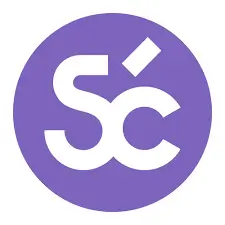A guest post on augmented translation and the coming “disruptive transformation that will redefine how professional linguists work,” by Donald DePalma and Arle Lommel of Common Sense Advisory.
While language technology has traditionally only focused on speeding up processes and lowering costs, the present day requires tools that truly work for the modern linguist. At Smartcat, our aim is to harness new technologies to create an all-inclusive platform that places the linguist at the very heart of the translation process.
As technological advancement continues to transform the translation industry, the question most asked is how to utilize and benefit from these changes. The ultimate goal is to successfully combine technologies to create a platform that provides linguists with more guidance and context for their projects while also automating various low-value tasks that eat into a linguist’s productivity. CSA's findings resonate well with what we are doing at Smartcat: By incorporating the most in-demand linguistic technologies into one centralized Cloud platform, we are helping language professionals work in a more responsive, consistent and productive manner. And we will keep striving to remain at the forefront of this technological transformation, while always maintaining a linguist-centred perspective. We hope you enjoy reading more about this topic in Donald and Arle's blog post below!
Originally posted on the CSA blog.
Language services today stand on the cusp of a disruptive transformation that will redefine how professional linguists work. This shift will come from the availability of ubiquitous artificial intelligence (AI) that extends their reach and capability and makes them far more efficient than they could otherwise be. CSA Research calls this new professional the “augmented translator.” Just as “augmented reality” uses AI to enrich individuals’ access to relevant information about their surroundings, this transformation provides linguists with more context and guidance for their projects. They work in a technology-rich environment that automatically processes many of the low-value tasks that consume an inordinate amount of their time and energy. It brings relevant information to their attention when needed.
This computing power will help language professionals be more consistent, more responsive, and more productive, all the while allowing them to focus on the interesting parts of their jobs rather than on “translating like machines.” Until now language technology developers have focused their work on speeding up the process and lowering costs. Those drivers have left many translators feeling alienated from the very aspects of their work that attracted them to the job in the first place – the creativity of language, the challenge of solving difficult problems, and the ability to work on stimulating texts and topics. Translators often find that they spend as much time managing the technology as they do translating, and that their rates are always under pressure. The augmented translation model changes all this by assisting linguists when they need it and getting out of the way when they do not. Today we see bits and pieces of this new paradigm, but the outlines are coming into focus. What will this new model look like? We predict it will use the following technologies:
Adaptive machine translation. This technology – currently found in Lilt and SDL BeGlobal – learns from translators on the fly. It adapts to the content they work on, automatically learning terminology and style. It remembers what linguists have previously translated at the sub-segment level, and goes beyond translation memory to help translate text it has never seen before in a way that is consistent with how the individual professional works. Rather than post-editing MT output of dubious quality, linguists see the results as suggestions they can choose to use or not. The more they use the system, the better these suggestions will become.
Neural machine translation. Today NMT requires vast amounts of processing power, but – as the technology matures – it will improve MT’s fluency and ability to “blend in” with human translation. Even if NMT is in the upswing of a hype cycle, it is a major step forward. Many of the major tech players – such as Baidu, Facebook, Google, and Microsoft – and dedicated translation technology providers – such as SYSTRAN and Iconic – are actively developing this technology.
Lights-out project management. Project management can be time-consuming for both managers and linguists. Manual processes such as invoicing and paperwork that eat up valuable time can be automated. When lights-out systems handle these tasks without the need for human intervention, they free up translators, interpreters, and reviewers to focus on their tasks.
Automated content enrichment (ACE). This technology is just catching on, driven by projects such as FREME and commercial offerings such as OpenCalais. ACE will benefit linguists by automatically linking terms to authoritative resources and by helping disambiguate them, which will improve MT. It will open new windows in transcreation by helping them find locale-specific content and resources that can make translations more relevant for the target audience.
If this vision is to become a reality, the individual technology components will need to talk to each other and work and learn from the linguist. For example, an ACE system will query a terminology database to identify terms and suggest them. The MT system will interface with both to disambiguate text and use their suggestions. All of these will feed into the translation memory, which will increasingly merge with MT. The lights-out project management system will learn about different linguists, their schedules, and their strengths and weaknesses and route work to them based on an individually tailored profile.
The advantage for linguists is that they will no longer be at the end of a chain with no influence on the process. Instead, they will control and work with all of this technology and become many times more productive. It will lower their cost per word even as it increases their value and effective hourly rate. It will relieve the tedium of translating repetitive variants of basic texts and help translators by more consistent and accurate. Such transformations have occurred in other sectors. For example, computerized bookkeeping eliminated the arithmetic aspect of accountants’ jobs in the 1980s – and thus freed them to focus on business planning and real-time financial analysis that is worth far more than merely tracking funds after the fact. So too, the next generation of augmented translators will eliminate routine low-value tasks that machines can handle perfectly well, and will instead focus on adding value and increasing the value of language for their clients.
CSA Research finds that LSPs that embrace technology already grow more quickly than those that hold back and the emergence of augmented translation will only add to this advantage. This new way of working uses technologies that already exist in new combinations, rather than waiting for some pie-in-the-sky new AI developments. It does not replace language professionals, but instead gives them the tools and resources to deliver their best value and quality. The shift to augmented translation will not be painless, but because the technology shifts to a linguist-centered perspective, it will hold tremendous potential for those linguists who are willing to embrace the changing landscape of technology.
Subscribe to our newsletter


